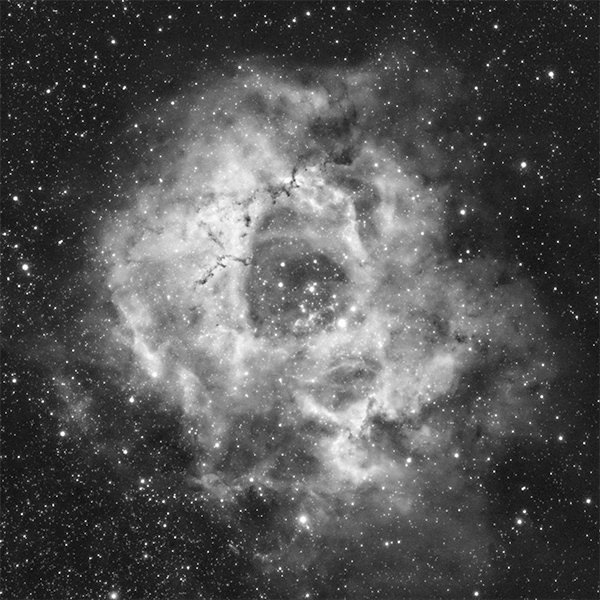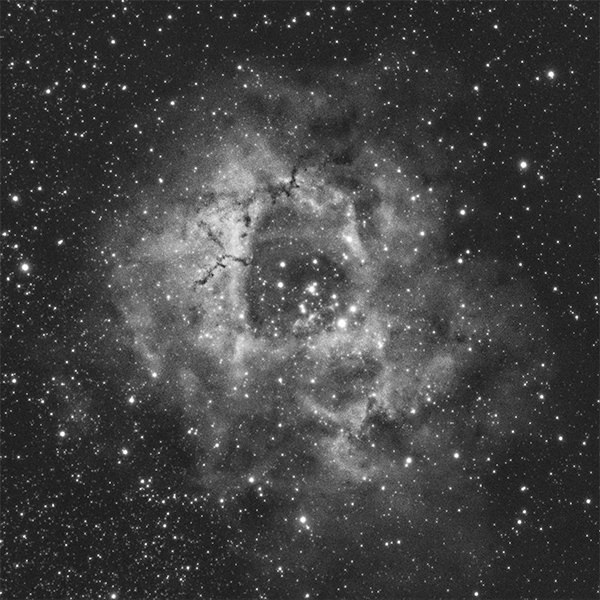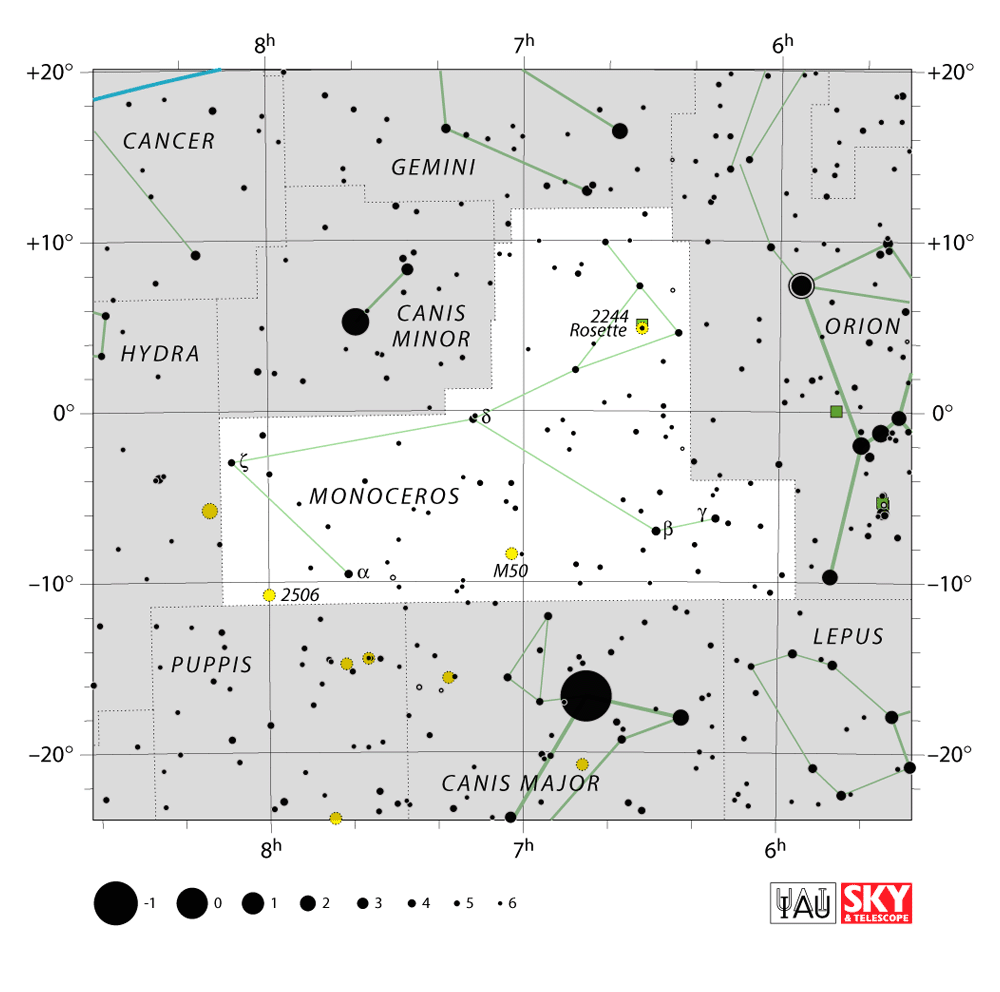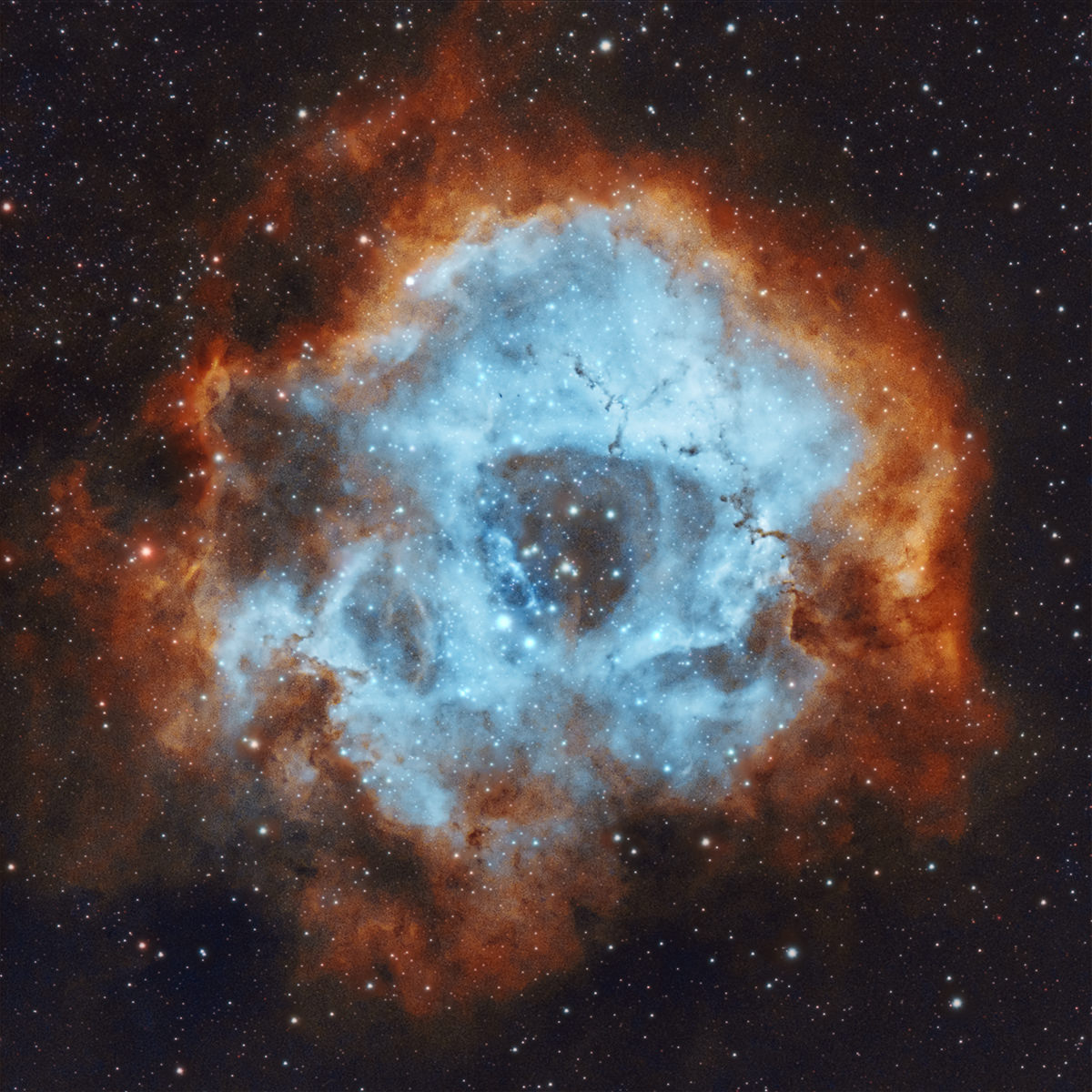The Rosette Nebula
The Rosette Nebula (C49) is an emission nebula located in the Monoceros constellation of the Milky Way. The open star cluster is closely associated with the nebulosity, having been formed from the nebula’s matter coming together slowly over time. This area has a lot going on, so it also can be indexed using: NGC2237, NGC2238, NGC2239, NGC2244, and NGC2246.
Specifications:
Designation: C49
Known As: The Rosette Nebula, The Skull Nebula
Apparent Size: 1.3°
Magnitude (lower is brighter): 9.0
Distance from Earth: 4,900 LY
Two Hour Imaging Using a Bicolor Filter
The image above was taken in a Bortle 5 sky using the ZWO Duo-Band Filter. This only allows Ha and OIII light through to the sensor, giving rich red and teal colors.
EQUIPMENT
Telescope: Apertura 60EDR
Mount: Skywatcher EQ6R-Pro
Camera: ZWO ASI533MC Pro
Guiding: ZWO ASI120MM Mini
Brain: ZWO ASIair Pro
Filters: ZWO Duo-Band Filter
ACQUISITION
Integration Time: 2 hours
RGB: 24 x 300sec
BIN: 1×1
Gain: 110
Temperature: -10° C
Bortle Scale: 5
CALIBRATION
Darks: 10
Flats: 30
Dark Flats: 30
Offset/Bias: 30


The Monoceros Constellation
Monoceros (Unicorn) contains only a few bright stars, making it tricky to locate with the naked eye. It is located near the celestial equator and borders the constellations: Canis Major, Orion, Gemini, and Hydra.
The Rosette Nebula is located in the center of the unicorn’s head. Other deep sky objects located in the Monoceros constellation include: Cone Nebula, Christmas Tree Nebula, M50, IC477, and NGC2254.

The Skull Nebula
By rotating the image 90-degrees, the Rosette morphs into the shape of the skull. This can be brought out even more by converting the color palette to a “Hubble-style”.
Captured on 2/27/22.

Available Merchandise
Use the Order Form to request prints or merchandise. (I accept Venmo or CashApp.)
*General information regarding constellations, galaxies, nebulae, and planets have been sourced from: AstroBackyard, VisibleDark, Wikipedia, EarthSky, and NASA.

